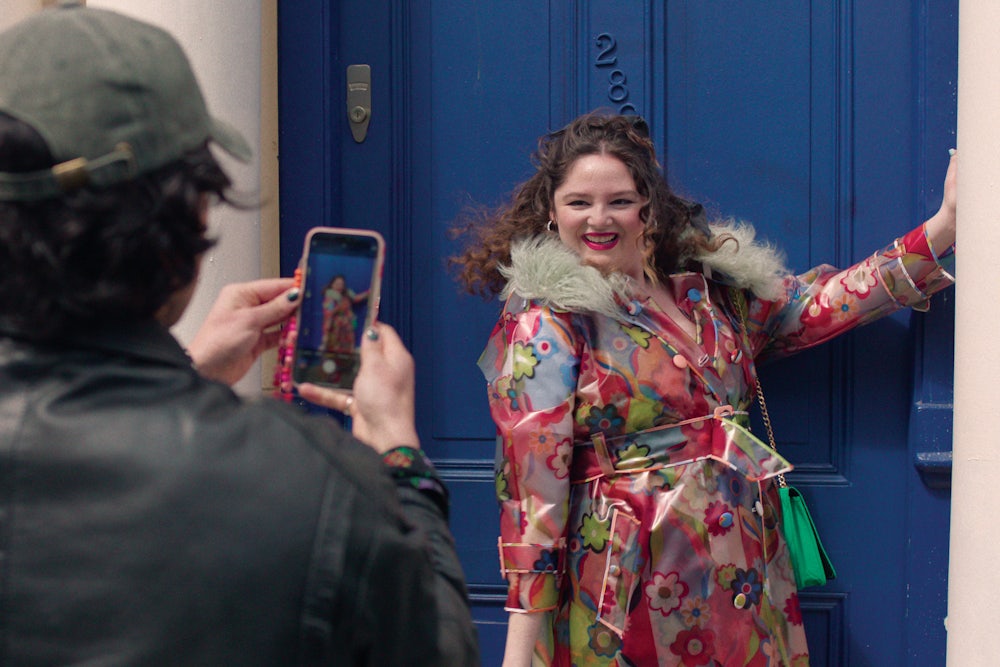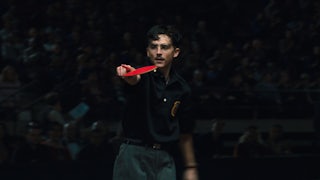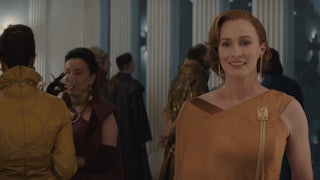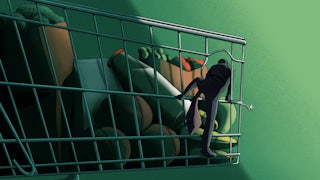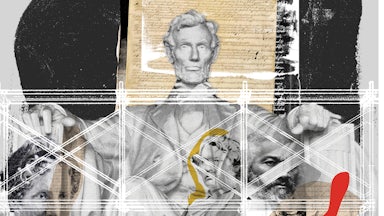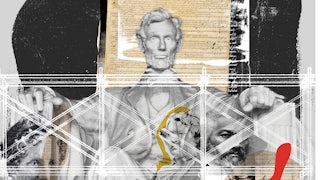What even was Girls? One of the features that notoriously distinguishes online writing about art and culture is its speed. In comparison to the kinds of slow, roiling debates among public intellectuals of previous eras, today’s discourse explodes in enlivening and exhausting near-simultaneous waves of point and counterpoint. There’s no better example of this kind of breakneck colloquy than the reception, in spring 2012, of the very first episode of Lena Dunham’s infamous HBO series Girls. Like the Big Bang for people who read recaps of episodes of television they’ve already seen, whole galaxies of discourse were born within the space of only a few days and weeks, left to expand over the course of years, and, in many ways, supplant the original text. As I’ve watched Dunham’s excellent, vexing return to long-form TV, Too Much, I’ve thought a lot about the degree to which those couple of weeks in 2012 have haunted everything Dunham has done since.
A few events happened in quick succession. In late March 2012, several weeks prior to the debut of the program itself, TV critic Emily Nussbaum published a glowing profile of Dunham in New York magazine that set the expectation for the series as a radical act of feminist art-making in a moment when women were finally breaking into key roles in TV production. Over the next couple of weeks, several reviews ran in legacy magazines that drew (somewhat disapproving) attention to the show’s exhibitionism and the cringe of its sex scenes. (Frank Bruni wrote, “Gloria Steinem went to the barricades for this?”) Then it actually premiered. The following day, The Hairpin’s J. Wortham praised the show’s quality while bemoaning its narrowness of vision and its lack of any characters of color. The day after that, Gawker began running episodic recaps that obsessed over the actors’ nepo baby status. Throughout, nearly every writer writing about the show wrestled with the unlikability of the main characters. These various claims, in many ways, came to characterize and constrain Dunham’s entire career. The show is brilliant and good for women. The show is luridly sexual and bad for women. The show is too white. The show is too privileged. The show is too irritating for any of that other stuff to matter.
These are oversimplifications, but the series’s reputation as problematic fave stuck with it until relatively recently. Over the past few years, critics and ordinary viewers have been returning to Girls. Rewatch podcasts have sprouted up, critical reassessments abounded around its tenth anniversary, HBO reported significant viewership spikes in 2023, Gen Z viewers discovered the show as a fascinating “period piece” about 2010s New York, and clips of its funniest and cringiest moments seemed to flood TikTok. In general, these revisitings have echoed Lili Loofbourow’s question about the initial reception: “How long did it take critics to realize that the protagonists in Lena Dunham’s Girls were supposed to be unpleasant?” In other words, why was it so difficult to imagine that the irritatingness—and the privilege and the whiteness—that critics and viewers called out about Girls was on purpose?
It’s 2025 now, and Lena Dunham is back with her first big television series since 2018’s surprisingly inert, one-season Girls follow-up, Camping. Too Much, which Netflix debuted this month, is an ambitious, sprawling rom-com about a thirtysomething American woman (played by Hacks supporting standout Megan Stalter) either finding love or having a quarter-life crisis in London (unclear which). The show is sometimes howlingly funny and sometimes unwatchably awkward; it’s comfortable and confrontational—it’s the Lena Dunham special. Thinking about the long shadow of Girls, about what we learned and didn’t learn from the conversations surrounding it, I’ve approached Too Much assuming that Dunham’s choices in it are deliberate. The show seems both more expansive and more self-aware than anything Dunham has yet done. That said, I’m not sure what it all means.
Girls, Tiny Furniture, even Catherine Called Birdy—Lena Dunham has often focused on subjects society might deem small-scale or insufficiently grown up, conceptually and linguistically diminutive. But in spite of or perhaps because of this miniaturist approach, her work has often been both pilloried and praised as excessive. She is, in fact, the subject of the final chapter of Anne Helen Petersen’s 2017 Too Fat, Too Slutty, Too Loud: The Rise and Reign of the Unruly Woman. So calling her new series Too Much functions as both a statement of knowing introspection and as, well, bait.
Is it too much to say that Too Much is a bit too much? It’s certainly the best way to describe Jess (Stalter), the show’s protagonist and, to some degree, Dunham’s stand-in. At the start, Jess has just gone through a rough breakup. Her boyfriend, who was once dreamily devoted to her, grew steadily colder and meaner until their relationship disintegrated. Now he’s dating a social media influencer named Wendy (Emily Ratajkowski), and she’s sharing their picture-perfect relationship all day every day online for Jess to watch. The series is narrated by way of a succession of enraged responses Jess records to Wendy’s posts that she buries on her private account. It’s a mildly funny joke that the show overcommits to in a way that doesn’t quite ever work.
Jess, you see, is “too much.” She overshares with new acquaintances, she smothers or shrieks at loved ones, she wears bunny ears to a work event, she does too much coke and ketamine, she dresses her hairless dog in “precious gowns,” she affects a bad British accent to British people, she speaks in what one character describes as “Tourette’s-style” fits and starts, she puts on a piece of sexy satin lingerie that for some reason has a hood. Back at home in the United States, she’s friendless. The only person she seems comfortable around is her older sister, played by Dunham. And it’s not any better in London. Her new colleagues appear ambivalent at best toward her. Most of the neighbors in her council estate categorically refuse to talk to her. We even see the exuberantly welcoming wife of her boss (Naomi Watts) send looks to her husband (Richard E. Grant), as if to say, What the hell is going on with this woman?
The only one who seems to appreciate her at all—outside of her hairless dog, whose mere image is a potent punch line in nearly all her scenes—is Felix (Will Sharpe) a moody, emotionally damaged singer-songwriter. The two fall in love essentially the first night they meet, and the series tracks the ups and downs of their condensed, not particularly novel courtship. Jess needs constant affirmation and reassurance; Felix is neither particularly affirming nor reassuring. A compulsive overreader of facial expressions and social cues, Jess is alternately flummoxed and turned on by Felix’s flatness and deadpan demeanor. “I’ve always found, like, engaging with people’s inner lives is kind of a waste of energy,” Jess’s co-worker tells Felix at a dinner party. “I can go deeper by staying on the surface.” Felix’s surfaces aren’t expressive enough, while Jess’s are arguably too expressive. One of the best scenes in the series occurs when Felix makes Jess a mix CD. The camera hovers above them as they lie on the bed, facing the ceiling. As Jess listens with headphones, her face silently cycles twitchily through a dozen aborted expressions: joy, gratitude, terror, excitement, uncertainty, love, even physical pain. It’s a symphony of discomfort that Dunham—who directs most of the show’s episodes—lets play out at length, uninterrupted.
You might like Jess, or you might not. While it would be tempting to think of the character as a retread of Hannah Horvath, a new-generation update of Dunham’s original “unpleasant” protagonist, Jess is meaningfully different. Stalter is a sensational comic performer, and one of the things she’s best able to do is to convey the frenzied insecurity of her character. Hannah was insecure, sure, but part of what made her such a prickly watch was the blithe confidence of her narcissism. Jess is, from the moment we meet her, going through something. To be this way, for Jess, is both natural and painful. She has, somewhere deep inside her, the self-awareness that Hannah Horvath famously lacked. And it’s a curse.
So Jess is “too much,” but so is the show she’s on. Dunham’s aesthetic point of view, it seems, is to triple down on every directorial and writerly choice almost to the point of parody. The camera swirls—several laps more than you’d expect—around Jess and Felix as they make out in the street. The series features not one but two bacchanalian drug trip episodes back-to-back. Every episode is named, punningly, after a famous romantic comedy. (The pilot is called “Nonsense and Sensibility,” for instance.) And the show is littered with cinematic references and half-references. It’s important to say, though, that it’s not much of an homage to these classics, to which Dunham has an ambivalent relationship. Their invocation is a reminder of how different Too Much is, a revision as intimate and unrecognizable as Liz Phair’s Exile in Guyville, her feminist alt-rock response to the Rolling Stones’ Exile on Main St. The rom-coms are a set of beloved touchstones and a list of targets.
It’s one thing to say that the response to Girls ultimately obscured the show itself, its genuine strengths and weaknesses. But Dunham is also a provocateur by artistic temperament. There were just as many critics who found damning faults in her work as there were critics who walked directly into her traps. It was both a show that was hurt, in the moment of its release, by misreadings and a show that lustily invited misreadings. From the perspective of 13 years, I think it represented as much, if not more, of a paradigm shift in television as Game of Thrones, HBO’s defining 2010s series, which debuted the year before Girls. Both have many imitators; neither has a true heir.
Too Much is not that. In her recent book, All Things Are Too Small: Essays in Praise of Excess, the critic Becca Rothfeld writes, “All things are too small for us because each of us can only be one paltry person at a time.” Too Much looks and acts like a romantic comedy, but it’s also a kind of tragedy of the self, along the lines Rothfeld describes. The mistake critics made in reading Hannah Horvath was in assuming that Dunham meant for her to be more—more representative, more culturally significant—than just “one paltry person.” But Jess, as a character, is hyperaware of her own paltriness—whether it’s through her own nagging self-doubt or other characters’ constant reminders of how small she is—and it is too much for her to bear. To see an unattainable romance in movies is one thing, but to see life roiling around you, bonds of kinship and friendship transformed into multiplying ensembles of care and intimacy, and to be rejected from those ensembles, left stranded in their midst, is another thing entirely. It’s somehow, improbably, more than I expected.
